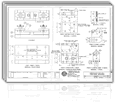We need your consent to use the individual data so that you can see information about your interests, among other things. Click "OK" to give your consent.
ASTM D4496-21e1
Standard Test Method for D-C Resistance or Conductance of Moderately Conductive Materials (Includes all amendments and changes 12/8/2022).
Translate name
STANDARD published on 1.1.2021
The information about the standard:
Designation standards: ASTM D4496-21e1
Publication date standards: 1.1.2021
SKU: NS-1096723
The number of pages: 5
Approximate weight : 15 g (0.03 lbs)
Country: American technical standard
Category: Technical standards ASTM
The category - similar standards:
Annotation of standard text ASTM D4496-21e1 :
Keywords:
electrical shielding, moderately conductive, semicom, surface resistivity, volume resistivity,, ICS Number Code 29.050 (Superconductivity and conducting materials)
These adjuncts apply to this standard:
Adjunct to D4496 Standard Test Method for D-C Resistance or Conductance of Moderately Conductive Materials
Selected format:Show all technical information.
Additional information
| Significance and Use | ||||||||||
|
5.1?This test method is useful for the comparison of materials, as a quality control test, and for specification purposes. 5.2?This test method is useful in the selection and use of materials in wires, cables, bushings, high-voltage rotating machinery, and other electrical apparatus in which shielding or the distribution of voltage stress is of value. 5.3?Commercially available moderately conductive materials frequently are comprised of both conductive and resistive components (that is, cellulose fibers with colloidal carbon black particles attached to portions of the surfaces of those fibers, or discrete conductive particles adhered to the surfaces of electrical insulating polymers). Such commercially available materials are often manufactured in a manner that results in anisotropy of electrical conduction. Hence, the significance of tests using this test method depends upon the orientation of the specimen tested to the direction of the electric field and the relationship between this orientation and the orientation of the material in the electrical apparatus, which uses these materials. |
||||||||||
| 1. Scope | ||||||||||
|
1.1?This test method covers the determination of electrical resistance and electrical resistivity of materials that are generally categorized as moderately conductive and are neither good electrical insulators nor good conductors. 1.2?This test method applies to the materials that exhibit volume resistivity in the range of 100 to 107 ?-cm or surface resistivity in the range of 103 to 107 ? (per square). 1.3?This test method is designed for measurements at standard conditions of 23 ?C and 50 % relative humidity, but its principles of operation can be applied to specimens measured at lower or higher temperatures and relative humidities. 1.4?This standard does not purport to address all of the safety concerns, if any, associated with its use. It is the responsibility of the user of this standard to establish appropriate safety, health, and environmental practices and determine the applicability of regulatory limitations prior to use. 1.5?This international standard was developed in accordance with internationally recognized principles on standardization established in the Decision on Principles for the Development of International Standards, Guides and Recommendations issued by the World Trade Organization Technical Barriers to Trade (TBT) Committee. |
||||||||||
| 2. Referenced Documents | ||||||||||
|




 Cookies
Cookies
